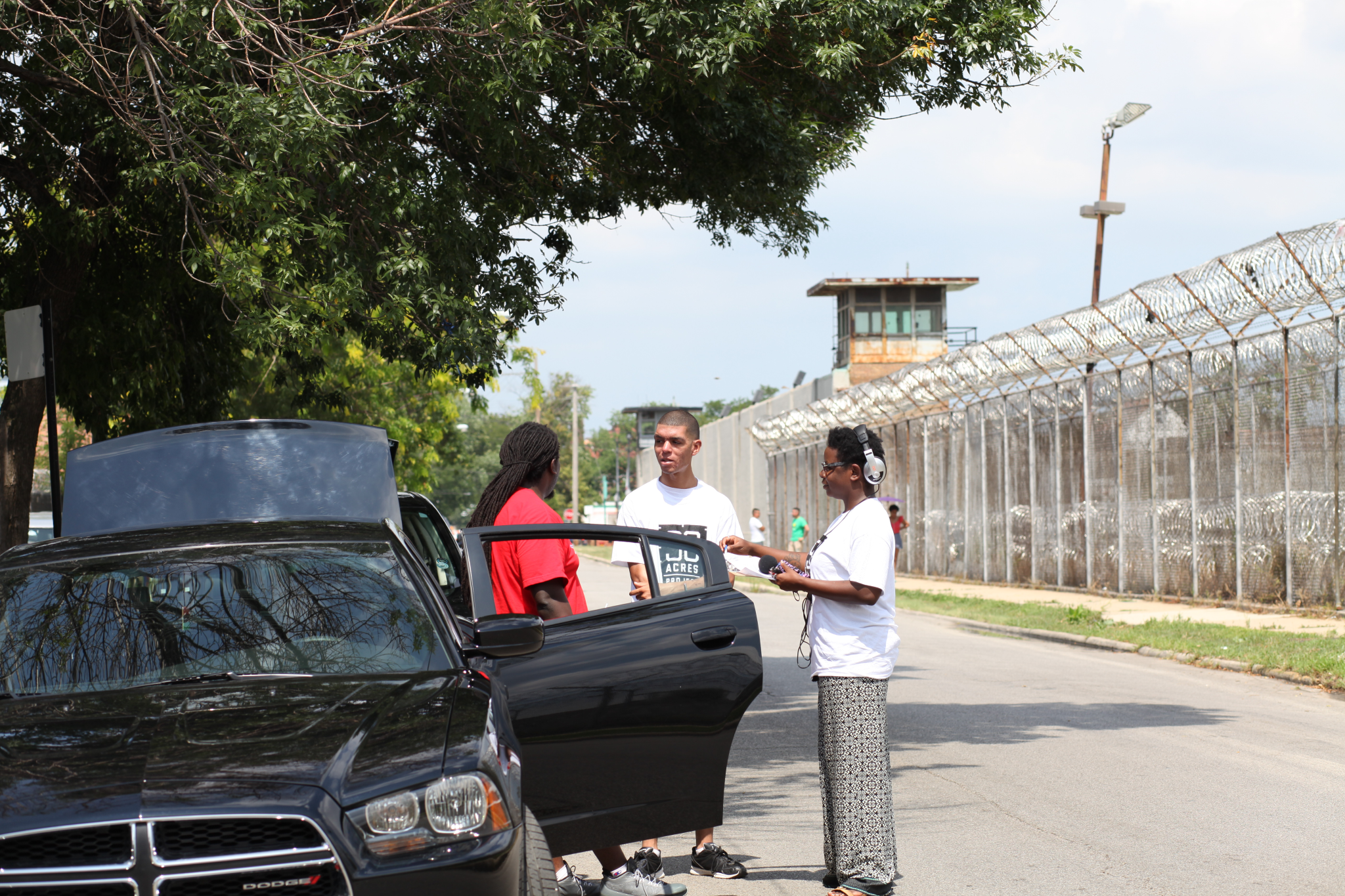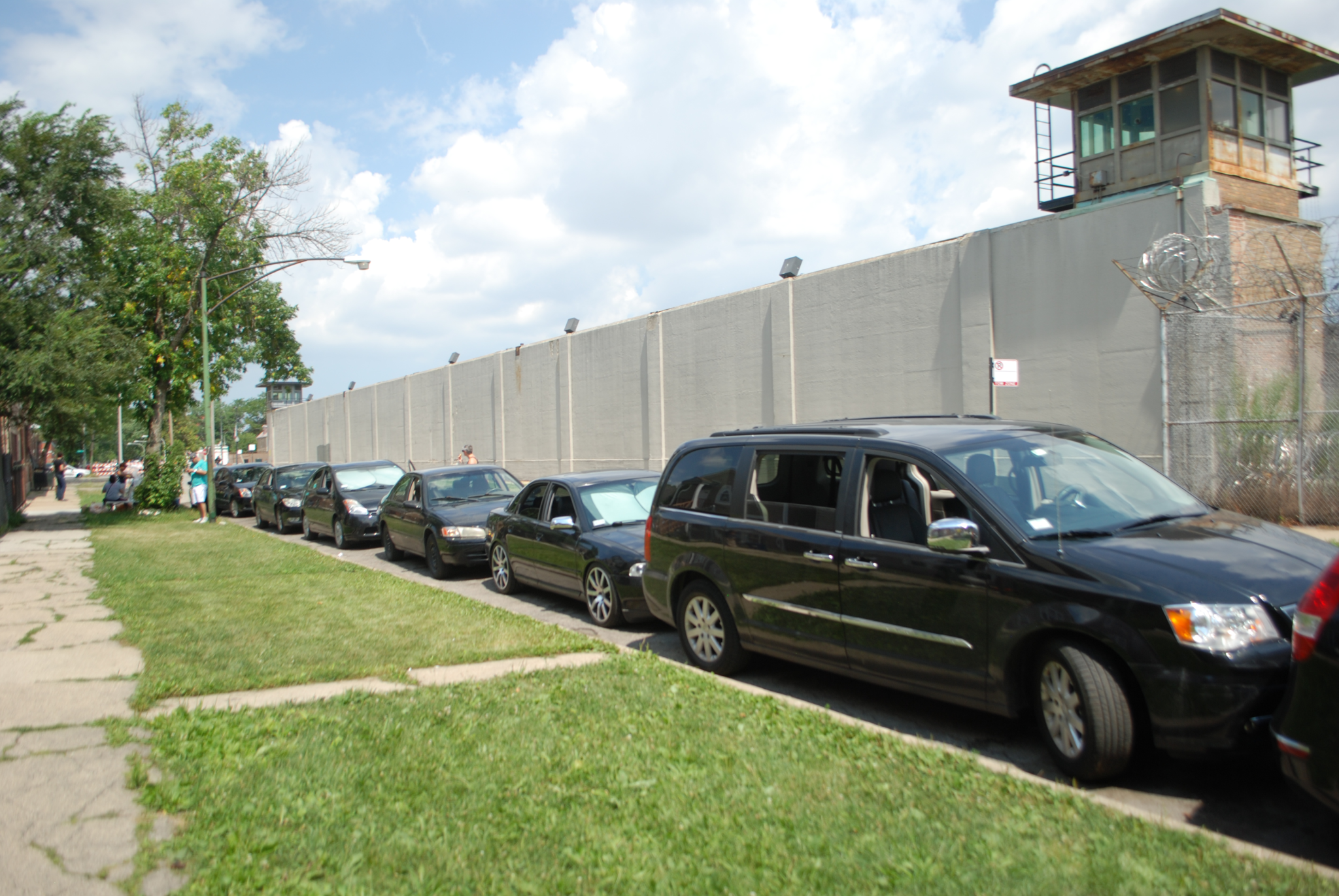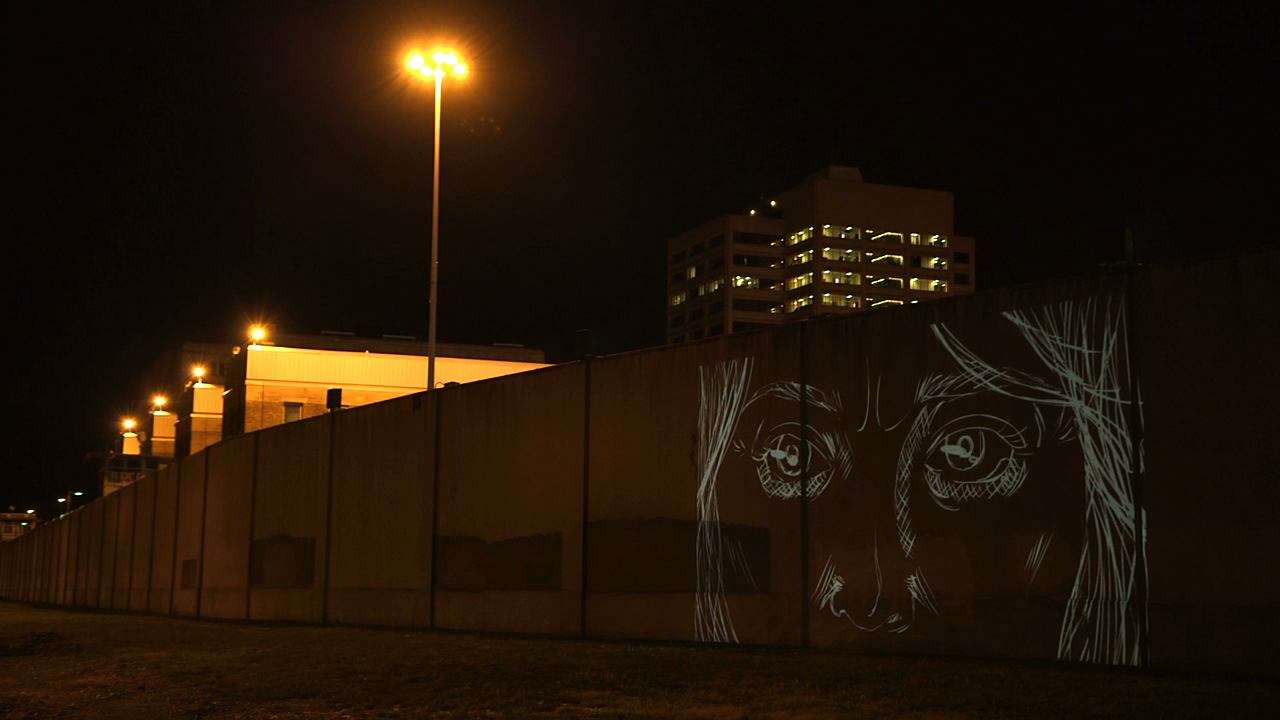Anyone new to Little Village would be confronted by a glaring visual contrast when walking south on Sacramento Avenue. On the right is an ordinary residential area, with families going about their daily business; on the left stand the austere concrete walls of the imposing Cook County Jail, above which floodlights are installed at regular intervals, pointing inward. Slightly further south, the harsh concrete is abruptly replaced by two layers of chain-link fencing, topped with multiple coils of barbed wire. As the jail continues to sprawl southward, the houses segue into a soccer field, a community space with floodlights of its own.
The sheer immensity of Cook County Jail and its stark juxtaposition against the calm residential community are some of the ideas that the 96 Acres Project—so named for the vast land area occupied by the jail—grapples with. Maria Gaspar, the project’s founder, was born and raised in Little Village, and remembers growing up under the shadow of one of the largest jails in the country. “The jail is such a prominent part of the neighborhood. However, it was sort of invisible, you know?” she says.

During her childhood, she visited Cook County Jail as part of a school field trip. “It was definitely using the approach of the ‘Scared Straight’ program. And so my class of mostly Mexican immigrant kids were taken to the jail, through Division I, one of the maximum-security parts of the jail,” Gaspar says. She distinctly remembers walking through the division’s occupied cells. What was most perplexing for her was that there was no context ever provided for her experience, as her teachers never talked about it with the class. “I think it’s slightly different now, but when I look back, I think about the ways that that place has been silenced or made invisible, and that the only time that we see it is through the lens of racialized criminalization. Not just of race, but also of poverty.”
Working closely with Jaime DeLeon at Enlace Chicago, an organization dedicated to bettering the lives of the residents of Little Village, Gaspar fostered neighborhood involvement from the outset by initiating conversations with locals on her interest in arts programming and support for the incarcerated at Cook County Jail. Gaspar and Enlace Chicago garnered support for their project from such figures as Cook County Commissioner Jesus “Chuy” Garcia. After working closely with the Chicago Public Art Group to apply for funding, the 96 Acres Project launched in 2012.
Gaspar is an assistant professor at the School of the Art Institute of Chicago, and the philosophy behind her artwork underpins the project’s focus on community-engaged art. “My own artistic practice as an artist and as a teacher involves a lot of performance and a lot of action-based work. As an artist and as a community member, I was interested in working with others to think about ways that we could create counter-narratives around a place of incarceration,” Gaspar says. “There’s a dominant narrative that we all are familiar with, especially coming from communities of color. What are the ways that we can create art that is insightful, that is challenging, and that also humanizes the jail?”

These ideas have shaped the eight cross-medium artistic endeavors that the 96 Acres Project has undertaken over the last three years. Many of the projects are site-responsive and take place around Cook County Jail, including Landon Brown’s “PARK.” Members of the public were invited to park their black, brown, and white cars along Sacramento Avenue, according to the racial demographics of individuals detained at Cook County Jail. The car owners, crowdsourced through various social media platforms, rolled down their windows and played recordings of B.B. King’s 1970 performance at Cook County Jail. To Gaspar, it was this combination of visual data representation, auditory engagement, and community involvement that gave Brown’s work its power. “We have sound coming out of these cars, and sound starts to transcend these walls that are borders, that are dividers, that are separating people. It starts to move through space, and I think during that event many people experienced this transcendence of space, you know? It’s a very literal implication of the body which I think is very, incredibly powerful.”
Several projects also involve or are aimed at families of the incarcerated. Bianca Diaz’s The Princess Who Went Quiet, for instance, is a children’s comic book written to broach the subject of incarceration, especially for families with at least one incarcerated parent. One of the most recent projects of 96 Acres was Stories from the Inside/Outside, in which two films were projected on a concrete wall of Cook County Jail. The first film, produced by the Prison + Neighborhood Arts Project, dealt with how the incarcerated at Stateville Correctional Center, a maximum security state prison, experienced freedom and time. The second film portrayed the experience of a family torn apart by incarceration and subsequent deportation, complementing the first film by narrating a story from the other side of the walls of a detention facility.

Apart from these artistic works, the 96 Acres Project also supports the education of youth, teachers, and others. While education was not a core element from the outset, it developed organically and has become an inseparable component of the project. Silvia Gonzalez from Village Leadership Academy and Paulina Camacho from Benito Juarez Community Academy are among the art teachers who work with 96 Acres and who are actively involved in creating their own curricula for the students in their respective schools. “So many of the kids that we work with know someone in the jail, or have come across it in some kind of way, so the teachers were really excited about producing curriculum that is based on the work of the artists and the art projects that we’re doing, and bringing it into the classroom,” said Gaspar.
“As an artist and an educator, I want to think about ways that creative people of all kinds can reimagine alternatives for prisons and jails,” Gaspar said. Her project is paving the way in reshaping the skewed narratives surrounding the prison-industrial complex, and, without a doubt, she is making waves beyond Little Village, across creative communities on the South Side.
“My hope is that all of us can individually and collectively understand that jails and prisons are built on deep systemic oppression, that not only affects the people who are incarcerated, but everyone. And I hope that we can really focus more on creating a system that is not based on racism and sexism, but on justice. I think that it deeply requires a radical imagination.”


I’m reading “The New Jim Crow” right now and this article couldn’t be more on time. Thank you for shining a local lens on American minority incarceration issue.